Birch Polypore / All Year / Medicinal / Edible
Step into the realm of natural medicine and discover the remarkable healing properties of Birch Polypore, scientifically known as Piptoporus betulina.
In this blog post, we embark on a journey into the world of this unique mushroom, revered for centuries for its medicinal benefits and versatile uses. From its distinctive appearance on birch trees to its rich history in traditional herbal remedies, the Birch Polypore holds a special place in the hearts of herbalists and nature enthusiasts alike. Join us as we uncover the hidden secrets of this powerful fungus, exploring its therapeutic qualities, methods of extraction, and applications in holistic wellness. Let us delve into the captivating world of Piptoporus betulina, where nature’s healing marvels offer us a glimpse into the profound connection between fungi and well-being.
Common Name
Birch Polypore, Razor Strop Fungus.
Scientific Name
Piptoporus Betulina
Family
Fomitopsidaceae
Habitat & Lookalikes
Birch polypore grows primarily on birch trees and has no look-alikes. You can sometimes find them in big clusters all over trees also.
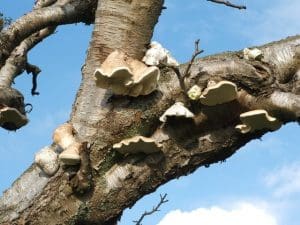
Description
A large bracket develops from a small white spherical swelling on the side of dead or living birch trees. Very common in Europe and North America.
Identifying Features of the Birch Polypore Mushroom:
Cap
Grey-brown at first and almost spherical, flattening and turning browner on top and white underneath as it matures. 10 to 25cm in diameter and 2 to 6cm thick when fully mature, they grow singly but there are often several on the same host tree so that from a distance they look like a series of steps.
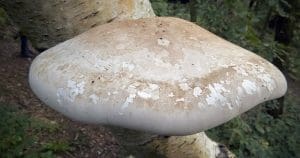
As they age they can get a greenish covering over the caps
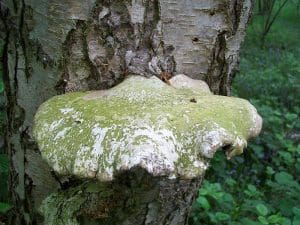
Stem
No real stem.
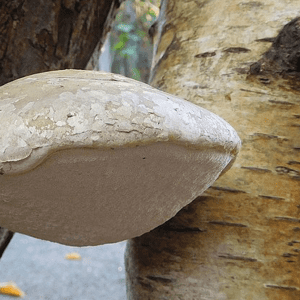
Tubes and Pores
Small white tubes are packed together at a density of 3 or 4 per mm
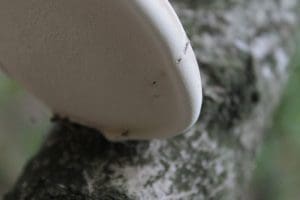
Spore Print
White.
Smell
Pleasant mushroom smell.
 In food
In food
Not generally eaten as the texture is like Styrofoam once they are large, small ones can be eaten, they have a citrusy flavour. This isn’t to say they couldn’t be eaten with some innovation.
Medicine
An amazing mushroom that has been used medicinally for many millennium. It has lots of uses including:
Antiviral. In tests extracts from the Birch Polypore blocked reproduction in HIV cells, and has proved positive in treating flu, yellow fever and West Nile flu.
Antibiotic. The Birch Polypore contains the antibiotic piptamine which has been used to treat e-coli.
Anti-inflammatory. There are several triterpene acids present and these are known to be anti-inflammatory.
Anti-Tumour. Betulenic acid and other chemicals in the fungi have been shown to destroy cancer cells while not affecting healthy cells.
Antiseptic. For cleaning wounds and being an aid to healing.
Antifungal. This mushroom does not like to share its habitat with other mushrooms and contains some powerful antifungals.
Other uses
As its common name suggest this fungus has been used in the past by barber to sharpen their razor blades, it has also a useful tinder fungus as it will easily take a hot spark. A field dressing or sticking plaster can be made from the porous underside.
Known hazards
None known.
Harvesting
The brackets are annual but may persist through one winter.
Potential lookalikes
It is difficult to confuse this polypore with any other species because of its distinctive colouring and specific restriction to birch trees



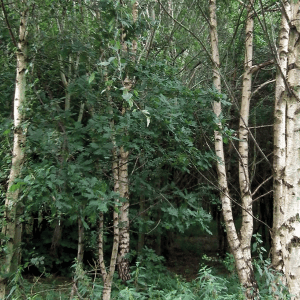
 In food
In food

